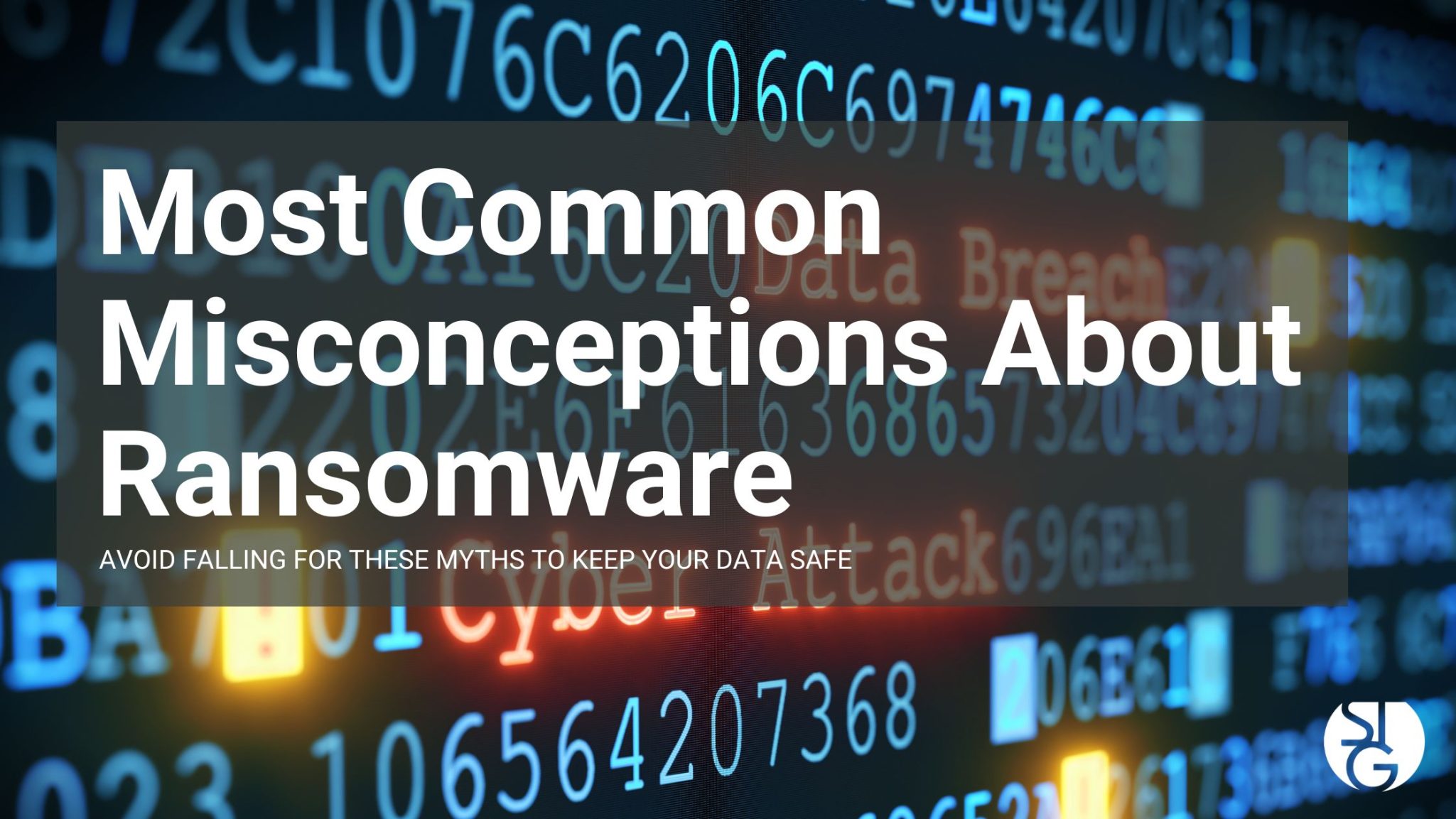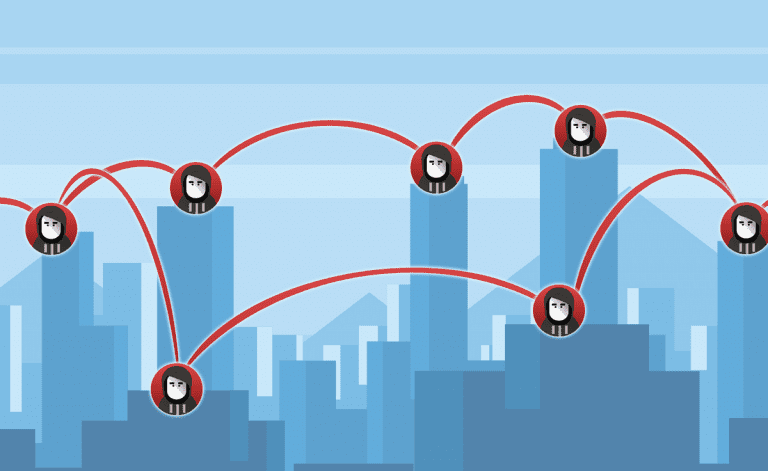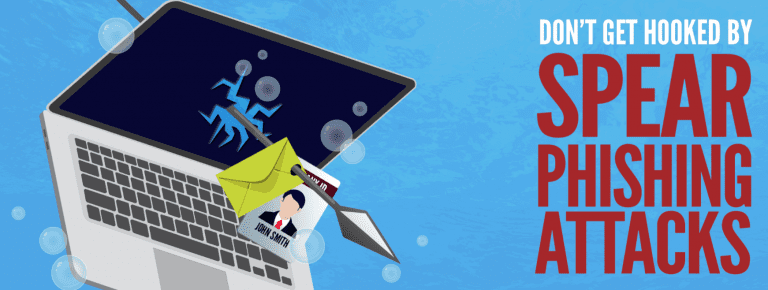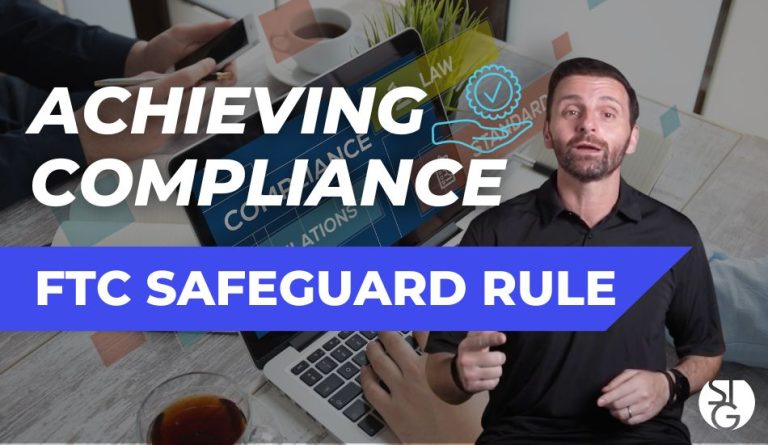Businesses of all sizes face a daily threat from ransomware attacks. Last year alone, US businesses lost up to $160 billion as a result of ransomware attacks. Unfortunately, this number is anticipated to grow in the years ahead. For those of you who question whether ransomware would ever effect you, let’s get into the most common misconceptions about ransomware.
Many businesses are aware of the dangers that ransomware poses, yet they are nonetheless vulnerable to attacks. This is partially because companies accept ransomware misconceptions as truth and do not prepare themselves for attack.
We’re going over 5 common ransomware misconceptions to help prevent your business from falling victim to cybercrime.
1. “It’s Not Going to Happen to my Business”
One of the most widespread misconceptions about ransomware is the belief that these things only happen to other people. Never us. Small to medium size businesses especially, think ransomware only impacts large-scale companies with significant cash flow and highly sensitive data. The opposite is actually true. In fact, smaller companies with 100 or less employees are three times more likely than larger companies to experience ransomware attempts.
Smaller businesses and even individuals are ideal targets in the eyes of cybercriminals. This is because they frequently lack IT teams with knowledge on network monitoring tools that large-scale businesses have. Plus, cybercriminals know that small businesses have this misconception and probably don’t utilize identity management software, which could help stop an attacker from getting into a network.
Small businesses are appealing targets for cybercriminals despite the fact that they might not profit as much from a ransomware attack on them.
Never think that a small firm is too small or undesirable to be the target of a ransomware attack. Every company has the potential to be a target, so it’s imperative to secure your network in a proactive manner.
2. The “Ransom” Fee is the Only Cost of an Attack
Another common misconception about ransomware is the idea that businesses can just pay the ransom and the problem will go away. This argument claims that even if the ransom is expensive, it is a necessary expense of conducting business.
The truth is that a ransomware attack can have costs that go well beyond the ransom itself. Costs associated with lost productivity come first. Even if your company pays the ransom and receives your data right away, you’ll probably miss a few days of work as a result of the attack.
The cost of cleaning up after the breach is also a consideration. Since it’s near impossible to tell if an attacker has private information about you company or client, you business may be subject to legal action or have to credit the cost of monitoring for thousands of clients. Your company will be subject to sanctions from authorities if the information you were meant to protect such as medical records or credit card numbers gets exposed.
Succumbing to a ransomware attack can have terrible reputation repercussions. Companies that experience ransomware attacks risk losing the trust of clients and suppliers in the security of their data. Customers are significantly less inclined to conduct business with you if they don’t believe that your organization will keep their personal information or credit card data secure. A ransomware attack can have severe long-term effects on small firms’ reputations.
3. Phishing is the Cause of all Ransomware Attacks
It’s true that a bulk of ransomware attacks can trace back to phishing. An employee can unknowingly provide an attacker easy access to your company’s network if they click on a malicious link in an email and download ransomware directly on their device.
However, since phishing isn’t the only method ransomware assaults start, training staff members on how to avoid online phishing (opens in new tab) is not enough. Weak passwords or unpatched software are two common ways for cybercriminals to access networks. It is crucial that your firm has a business password manager and stays current with security updates.
Our business uses Keeper as a password manager and we highly recommend it to all our clients.
4. Using Anti-Virus is Enough to Defend Against Ransomware
Unfortunately, there is no one stop fix to preventing ransomware. Having a great antivirus software can be essential in ransomware defense. It does a good job of stopping beginner hackers by detecting ransomware before it is given access.
However, antivirus by itself is far from sufficient enough to stop more high level threats. Cybercriminals often create a base of operations in your network and then spend weeks or months finding out how to bypass your firewalls and antivirus software. Even the best networks have weak areas. If given enough time to test the boundaries of your security system, attackers will inevitably discover them.
Active network monitoring is the only method for preventing these attacks. Businesses must utilize access management software that can notify IT administrators of unusual activities, such as unauthorized access to crucial data servers during off-hours. Additionally, organizations should think about mandating regular password changes and adopting multi-factor authentication for network access.
5. I Never have to Worry about my Backups
The last line of defense against a ransomware attack is data backups. Your organization will be able to prevent paying the ransom or losing data if you have a successful backup in place.
However, you shouldn’t believe that just because your business has backups, it will never succumb to an attack. Since many businesses have data backups, cybercriminals try to compromise them as part of their attack strategy. Your backups could be lost along with the rest of your organization’s data if you don’t completely safeguard it.
A multi-tiered method is the most effective strategy for handling backups. In addition to maintaining physical backups that are offline to the network, your business can employ cloud backup software. If you do utilize backup software, it’s crucial to keep an eye on who has access to your backups and to make sure a robust firewall is in place between your primary business network and your backup servers.
Overall
These 5 most common misconceptions about ransomware are all too prevalent. Step one is accepting they can make your business more vulnerable to attack. Businesses should be extremely mindful and pro-active in their prevention against ransomware.
If you’d like to find out more about what’s new in the tech world, make sure to follow our blog!
Click here to schedule a free 15-minute meeting with Stan Kats, our Founder, and Chief Technologist.
STG IT Consulting Group proudly provides IT Service in Greater Los Angeles and the surrounding areas for all of your IT needs.





